Reverse SEO seeks to push down the negative stuff, unlike regular SEO, which tries to get your content to the top of search results. This way, the first thing people see when they search for your business is the nice stuff.
If you look for your business online, the first few results are all bad, like fake reviews or even scams. People may not want to use your services because of this.
Reverse SEO helps fight this by making sure that the first things people see are good things about your company. This blog talks about how important reverse SEO is for keeping your online reputation safe. It gives you useful advice on how to keep your brand’s excellent name at the top of people’s minds. Businesses may utilize reverse SEO to make sure they look their best online by making great content, getting published on popular sites, and linking to them in smart ways.
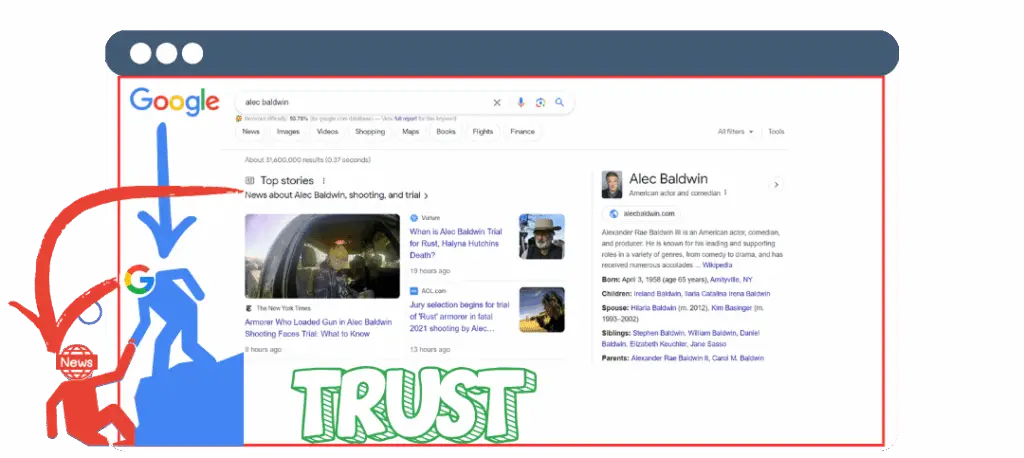
Reverse SEO Made Easy: Improving Your Online Reputation
For your internet reputation, reverse SEO is like a digital life jacket. It helps you move the bad material down in search engine results and the good stuff up, so consumers see the best of your brand first.
It’s Not Like Traditional SEO
Regular SEO is like climbing a mountain to be seen; any visibility is good. Reverse SEO, on the other hand, gently pushes the not-so-good material down the hill and out of sight. It’s all about making the good things about your brand stand out more and getting rid of any bad things that might come up when someone looks for you online.

Managing Your Online Reputation and Reverse SEO
People’s opinions of you or your business can be affected by your online reputation. Terrible reviews, terrible customer feedback, or lousy web pages can have a long-lasting effect. That’s why it’s so important to control your internet reputation. Reverse SEO makes sure that good and accurate information is at the top of search engine results by pushing bad content below.
The easiest way to do this is to have a strong online presence with trustworthy websites, social media sites, and material that is well-optimized. Long-tail keywords in blogs, press releases, and profiles can help your site rank higher and make sure the right material is seen.
It is important to check on things regularly. Online monitoring tools keep track of mentions and let you know when new content comes out that could hurt your reputation. Reverse SEO methods can assist hide undesirable information when it comes up. Some companies hire reputation management companies to take care of this. The greatest method to lessen the harmful effects of undesirable information is to keep proactive, whether you do it yourself or hire someone else to do it.
Why Bother With Reverse SEO?
These days, first impressions are made online. People might not want to work with you if they see bad information or complaints about you online.
Use Reverse SEO to fix this. It’s important to make sure that when someone searches for you, they receive accurate and good information and stay away from anything that could hurt your reputation, including false claims or rumors that aren’t true.
How to Do Reverse SEO the Right Way
What Reverse SEO is about:
- Writing amazing content means writing things that answer people’s questions and show off the finest of what you do.
- Getting Noticed on Big Sites: To get more people to see your good work, share it on well-known websites.
- Linking: Link back to your good material so it moves up the search results and makes the not-so-good stuff tougher to find.
You can improve your internet reputation and make sure your brand is portrayed in the best light by following these measures. We’ll go into further detail about how to accomplish this well, including how to deal with problems and real-life instances of reverse SEO in action.
Ways to Do Reverse SEO
Reverse SEO uses numerous methods to lower the rankings of bad content in search results. The idea is to get rid of bad results and replace them with good ones that rank higher. You can take charge of how others see you online by making and optimizing content, establishing backlinks, and managing your reputation.
Make and Improve Content of High Quality
One of the best methods to hide bad SEO is to produce and optimize content. Search engines put new, useful content at the front of their lists. Writing blogs, publishing articles, and adding useful material to your website can all help your rankings. Using keyword research tools helps you find the correct search phrases, which makes it easier for your content to show up at the top of search results.
Pay attention to what your audience wants. Use Google’s “People also ask” and “Related searches” to find out what they want. Then, write content that answers their questions better than anybody else. If you see bad words like “Geek Squad scam,” don’t go right at them. Instead, tell stories about pleased consumers and your best features on your site. This way, the good outweighs the negative.

Get Involved on Social Media and Business Listings
Having active social media accounts and business listings is important for having a good online presence. Search engines including LinkedIn, Facebook, and Google My Business. Regular updates, talking to customers, and sharing useful material all make your site more visible. Search engines know about active accounts, which makes it more likely that they will rank higher than bad content.
How Social Media Affects Reverse SEO
Reverse SEO relies a lot on social media. You may use sites like YouTube, LinkedIn, and Twitter to help good content show up higher in search results. Posting often and talking to your audience can get them more involved, which will help your online profile. Sharing content on more than one platform also makes your business and website more visible in search engines.
You can use social media to promote positive reviews and press releases, which will make them more likely to show up higher than bad ones. Guest blogging and sharing material also help because they make new links to your website. Your efforts to manage your reputation will be stronger the more engaged and consistent you are. Over time, social media accounts with a lot of activity might outrank bad search results. You can control your digital footprint by keeping visible and interacting with your audience.
Make Strong Backlinks
Building backlinks is an important part of SEO. Search engines see that your material is trustworthy when well-known websites connect to it. This increases the chances that your content will show up higher than bad search results. Guest posting, working with influencers, and partnering with industry websites are all good ways to improve your link profile.
Keep an Eye on and Get Rid of Bad Content
You can keep an eye on damaging links and deal with negative SEO attacks with link monitoring tools. If inaccurate or misleading content appears at the top of the search results, think about ways to get rid of it. To get rid of old content, you can ask the proprietors of the websites to do so, file takedown requests, or employ Google’s search engine crawling tools. If you can’t get rid of it, the best thing to do is to focus on strong positive material.
Keep an Eye on the Results and Make Changes as Needed
You can’t just do reverse SEO once. It’s about paying attention and making changes when necessary. Check how your material ranks, chat to your readers, and make sure your content is always new and interesting.
The Risks of Reverse SEO
Reverse SEO can help you keep your online reputation under check, but it also has certain drawbacks. If you don’t do it right, it could affect your search engine rankings. One big risk is breaking the rules set by search engines, which might get you manual penalties from Google. Your website may decline in the rankings or potentially be taken off of search results because of these penalties.
Negative SEO is another worry. This is when competitors or bad actors utilize dishonest methods like spamming backlinks or duplicate content to hurt your site. If Google sees these dishonest SEO techniques, it may think you’re trying to change ranks, which could cause you to lose organic visitors.
If you spend too much time trying to get rid of bad material instead of generating good content, your online presence may also suffer. If you don’t follow the best practices for technical SEO, search engines may have trouble indexing your good content, which could leave unfavorable links or reviews accessible.
Use ethical tactics all the time to prevent these risks. You may build your online reputation without hurting your search engine results by making good content, following basic SEO techniques, and not taking shortcuts.
Problems With SEO and How to Fix Them
Reverse SEO may sound hard, but it’s really just about controlling what people find when they look for you online. It is really important for maintaining your online image clean, but it can be hard to do.
Here’s a simple way to dealing with these problems and making sure you win.
How to Handle Tough Competitors
The hardest part is when bad things about you show up on websites that Google trusts a lot. Google thinks these websites are very good, so it’s hard to beat them.
What to do: First, write great content that is so amazing that well-known websites want to publish it. You could write guest pieces, work with other people, and send out press releases. You want your material to be on websites that Google trusts just as much.
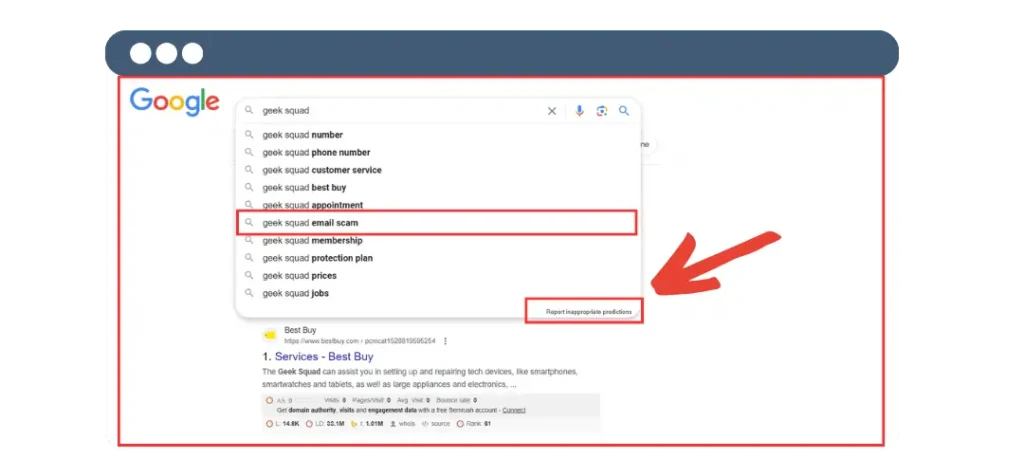
Keeping Content Up to Date
The internet moves quickly. What worked yesterday could not work today. You have to continually updating and upgrading your material to remain ahead of bad content.
What you should do:
- Make it a habit to check and update your content on a frequent basis.
- Stay up to date with the latest SEO trends and keep it fresh.
- Don’t forget to keep making fresh stuff, too.
The Right Way to Build Links
For reverse SEO, it’s really important to get other websites to link to your material, but it requires work. Getting these high-quality links requires a lot of work.
What to Do: Begin establishing acquaintances in your field who could be willing to write guest posts or trade content. Share your content on social media and forums to get links naturally. It might be worth it to hire an expert to assist you establish links sometimes.
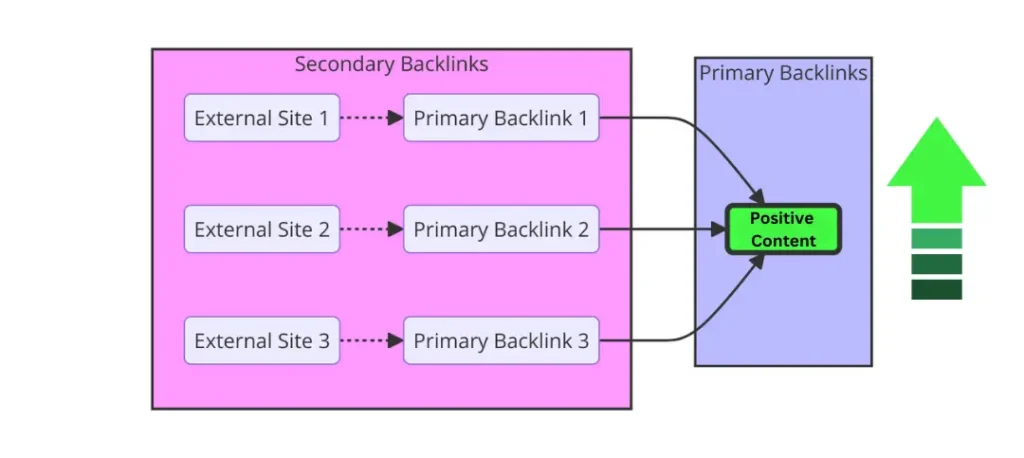
How to Handle Negative SEO Attacks
Sometimes, your competitors will try to tamper with your search rankings by connecting to terrible sites that are similar to yours. In the past, if a website tried to “game the system,” Google’s algorithm would punish it for a bad SEO attack. Black Hat SEO services could utilize this strategy to hurt your competitors. But those days are over. These spamming methods are becoming less effective at getting Google and other search engines to pay attention.
What to Do: Use tools like Google’s Search Console to see who is linked to you. Google provides a function that lets you overlook bad links if you see something that seems off.
How to Stay on the Good Side of SEO
If you want to do reverse SEO the right way, you have to follow the rules. It can really hurt to try to fool Google.
What to do: Follow the best SEO strategies. Make information that people will find useful and engaging. The best thing to do here is to be open and honest.
If you face these problems head-on with smart techniques, you can do reverse SEO like a pro. This not only helps keep your online reputation safe, but it also makes you more visible, so people can see the best of you online.
Using Reverse SEO to Fight Negative Keywords
Let’s say we’re talking about a huge store like Best Buy. Because of a “Geek Squad scam,” they’re having a hard time online.
This hoax is hard to spot. Scammers send bogus emails that look legitimate and use fake order details to deceive victims. Best Buy has a lot of trouble with this since it makes customers nervous and undermines the store’s reputation online.
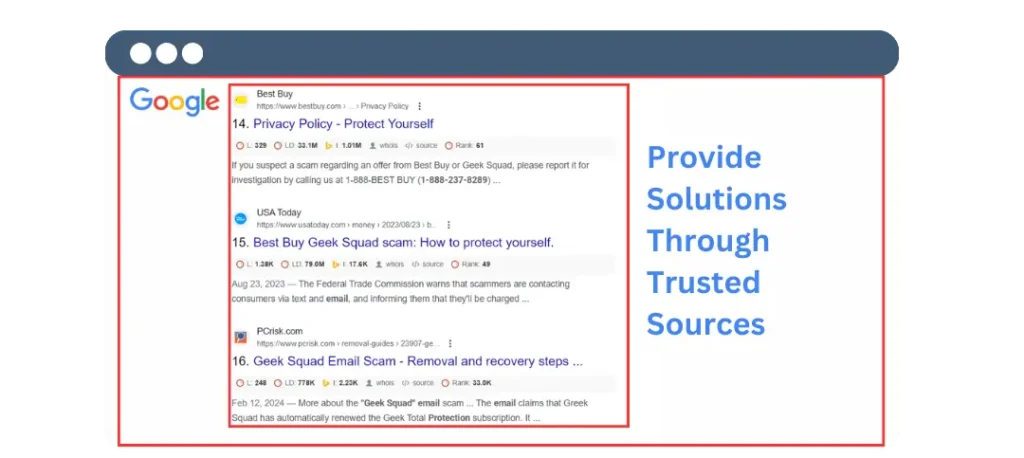
Using Smart Content to Fight Back
To fight this, our made-up store starts generating material that is very useful and relevant. They look at what people search for on Google to make sure they answer the proper queries. This is what protects them from the swindle.
Getting the Word Out About Your Content
Then, they post this amazing material to websites that people already trust and use. This is important because it helps push down the terrible things about the scam in search results, which makes more room for good tales about the store.
How to Build Links Like a Pro
After that, they work hard to link their good material to as many places as possible. This makes a strong network that helps their good content show up higher in search results. Adding more ropes to a net makes it stronger and easier to see.
The Results
Things start to look better after all this hard work. The bad news about the “Geek Squad scam” is starting to go away, and good news about the store is taking its place. This is a major accomplishment since it shows how savvy SEO can change things online and make the store seem nice again.
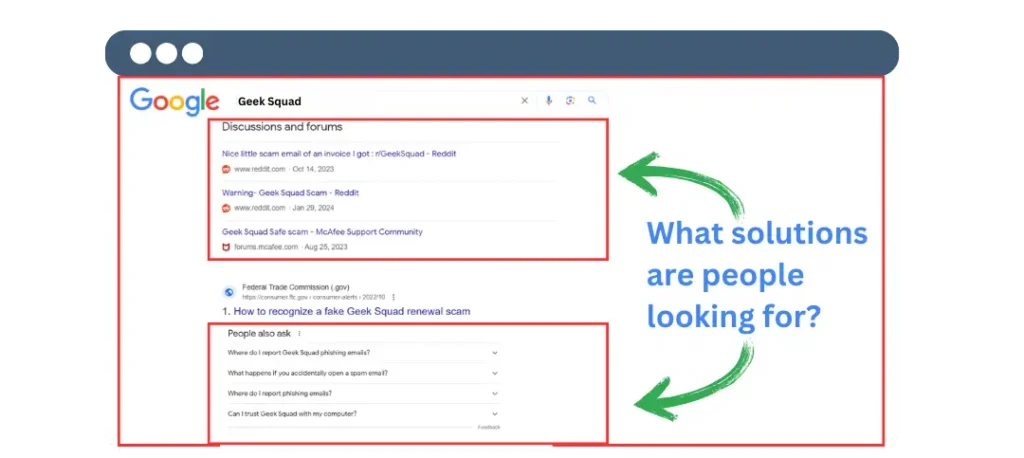
This example shows that any firm may turn unfavorable online press into a chance to engage with customers if they know what to do.
Important Points
To maintain and improve your brand’s online image, reverse SEO is very important. It’s about controlling what shows up in search results so that your story stays positive and true to your values.
This method includes making strategic material, carefully optimizing it, wisely developing links, and keeping an eye on your internet presence at all times. Every step is meant to show off the good things about your brand and hide the bad things. It’s all about turning problems into chances to show off what your business does best and get to know your consumer better.
Next Steps
Want to protect, boost, or fix your reputation online?
The first step to success is to work with NewReputation. Our staff is ready to make custom reverse SEO programs that fit your brand’s unique values and satisfy the needs of your audience.
Contact NewReputation right away for the best reputation management services that can help your brand reach its full online potential and boost your online image. Let’s make sure that when people search for you, they only see the greatest things about you.

